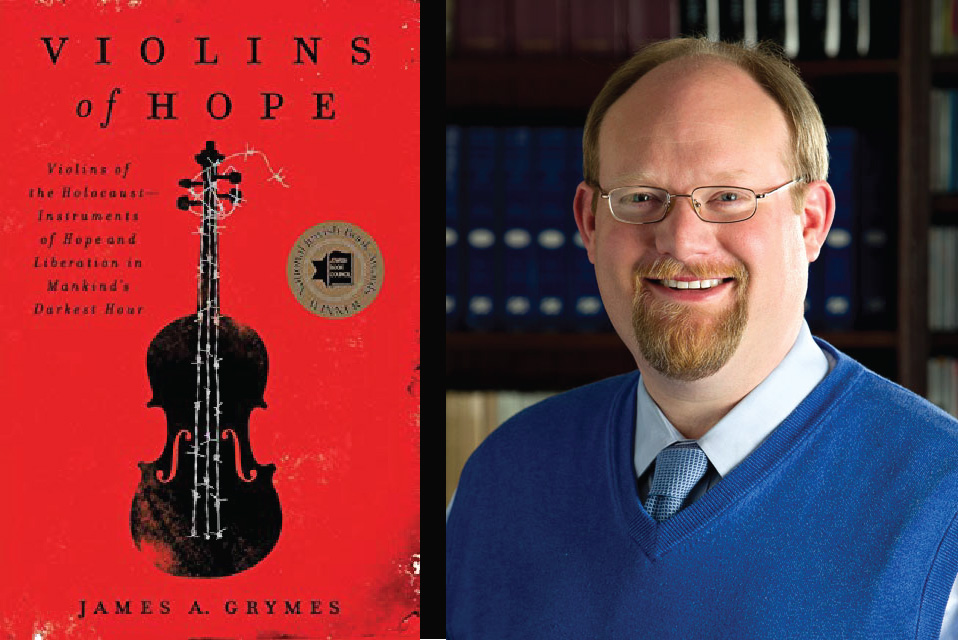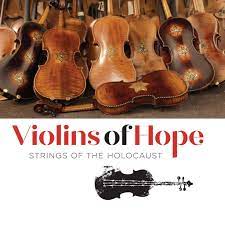|
Getting your Trinity Audio player ready...
|
Amnon Weinstein’s Legacy: Resonating Voices of Hope Through Violins of the Holocaust
Edited by: Fern Sidman
Amnon Weinstein, a revered Israeli luthier whose passion for restoring violins belonging to Jews during the Holocaust breathed new life into instruments laden with history and tragedy, passed away on March 4 in Tel Aviv at the age of 84, according to a recently published report in the New York Times. His legacy of preserving the musical heritage of those silenced by Nazi atrocities endures through “Violins of Hope” – an organization he founded, which continues to resonate with poignant tributes to the victims of the Holocaust.
His son Avshalom Weinstein confirmed his father’s passing, marking the end of a remarkable journey dedicated to honoring the memory of Holocaust victims through the universal language of music.
At the heart of Amnon Weinstein’s mission lay the belief that music has the power to transcend time and space, serving as a poignant reminder of lives extinguished far too soon. As was reported by the NYT, through Violins of Hope, he meticulously restored violins belonging to Holocaust survivors, ensuring that their voices would echo through generations.
In an emotional reflection captured in a 2016 PBS documentary, Weinstein likened Violins of Hope to “a huge forest of sounds,” each note serving as a poignant tribute to the individuals whose voices were forever silenced by the horrors of the Holocaust. “Each sound is standing for a boy, a girl and men and women that will never talk again,” he remarked, the NYT reported. “But the violins, when they are played on, will speak for them.”

Weinstein’s collection comprises over 60 Holocaust-era violins, each bearing witness to the untold stories of resilience and defiance in the face of unspeakable adversity. The information contained in the NYT report indicated that some of these instruments were carried by Jews in suitcases to concentration camps, where they were compelled to play music as their fellow prisoners marched to their doom in gas chambers. Others provided solace and fleeting moments of respite in the confines of Jewish ghettos, serving as a testament to the enduring power of music amidst unimaginable suffering.
Among the most poignant tales is that of a violin tossed from a train to a railway worker by a doomed man who recognized his fate. “In the place where I now go, I don’t need a violin,” the man reportedly told the worker, as was noted in the NYT report. “Here, take my violin so it may live.” Such acts of selflessness and defiance against the forces of darkness resonate deeply in Weinstein’s narrative, underscoring the enduring legacy of hope and resilience amidst humanity’s darkest hour.
James A. Grymes, a music professor at the University of North Carolina-Charlotte and author of “Violins of Hope,” vividly captured the essence of Weinstein’s workshop. According to the NYT report, Grymes likened the experience to “stepping in time,” evoking the aura of Stradivarius’s legendary workshop. “It’s like he was the Willy Wonka of the violin,” Grymes remarked, painting a picture of a space imbued with history, craftsmanship, and reverence for the instrument.

In the 1980s, a pivotal encounter forever altered the trajectory of Weinstein’s life and work. A man bearing the scars of Auschwitz arrived at his workshop, clutching a weather-beaten violin—the silent witness to unspeakable horrors, the NYT report explained. As Weinstein meticulously restored the instrument, he made a chilling discovery: ashes embedded within its depths, remnants of the crematoria at Auschwitz. The weight of history hung heavy in the air, confronting Weinstein with the stark reality of his own family’s losses in the Holocaust.
Initially hesitant to undertake the emotionally fraught task of repairing Holocaust-era violins, Weinstein grappled with the magnitude of the stories they held within their fragile frames. Yet, driven by a sense of duty and reverence, he embarked on a mission to breathe life into instruments that bore witness to humanity’s darkest hour, as per the information in the NYT report. One such violin, repaired by Weinstein, found its way into the hands of a grandson—a true testament to the resilience and continuity of life amidst the nightmarish Holocaust years.
It wasn’t until the late 1990s, as Weinstein imparted his craft to his son, that he began to reflect deeply on the significance of Holocaust-era violins in Jewish culture. The report in the NYT pointed out that from the humble shtetls of Eastern Europe to the vibrant melodies of klezmer bands and the soaring concertos of Itzhak Perlman, Weinstein recognized the enduring legacy of the violin as a symbol of hope, resilience, and cultural identity.
Through his tireless efforts with Violins of Hope, Weinstein transformed mere instruments into vessels of remembrance, giving voice to the silenced and preserving the stories of survival for future generations. The report added that his workshop may have been a modest space tucked away on King Solomon Street, but its impact reverberated across continents, bridging the chasm between past and present through the timeless language of music.
Born into a family steeped in musical tradition, Weinstein’s passion for the violin was ignited at a young age, ultimately leading him to become a guardian of history through his work with Violins of Hope.
His father, Moshe Weinstein, a respected musician and violin repairman, instilled in him a reverence for the craft from a young age, as was reported by the NYT. Following in his father’s footsteps, Weinstein honed his skills in violin making, embarking on a pilgrimage to Cremona, Italy—a city renowned for its master luthiers—before further refining his craft under the tutelage of Étienne Vatelot in Paris.
In 1975, Weinstein’s journey intersected with history when he married Assaela Bielski Gershoni, the daughter of a Jewish resistance fighter whose bravery during World War II was immortalized in the film “Defiance,” as was indicated in the NYT report. Their union not only cemented Weinstein’s commitment to preserving the legacy of Holocaust-era violins but also underscored the profound personal connection he felt to this mission.

Reflecting on his childhood in Mandatory Palestine, Weinstein recalled the ubiquity of the violin—a symbol of cultural heritage and resilience. “It was kind of a must for the young generation to learn to play the violin,” he remarked in a PBS documentary, as was noted in the NYT report. “And when you have a violin, Friday or Saturday evening, always somebody was taking it and playing on it.” These memories underscored the profound significance of the violin in shaping his identity and guiding his life’s work.
Driven by a desire to reclaim the voices silenced by the Holocaust, Weinstein issued a poignant plea during a radio interview, urging listeners to bring him instruments with ties to the Holocaust. The NYT reported that what ensued was a flood of families arriving at his workshop, bearing violins that had lain dormant in attics and cellars, each imbued with its own haunting narrative of survival and loss.
Among the most chilling artifacts were violins recovered from concentration camps in the aftermath of the Allied invasion of Germany in 1945. Weinstein, profoundly moved by these relics, recognized the solemn significance of these instruments. “This was the last human sound that all of those people heard, the violin,” he lamented in a radio interview on WKSU in Ohio, according to the NYT report. “You cannot use the name beauty. But this was the beauty of this time, these violins.” In their somber melodies, Weinstein found a profound connection to the souls of those who perished.
In 1996, Weinstein embarked on a visionary project that would forever alter the landscape of Holocaust remembrance: Violins of Hope. As was noted in the NYT report, the inaugural concerts featuring instruments from the collection unfolded in Turkey and Israel in 2008, marking the beginning of a global journey that would span continents and captivate audiences with the haunting melodies of history.
For Weinstein, each concert with the violins was not merely a performance but a triumph—a victory over silence and oblivion, the NYT report added. “Each concert is a victory,” he would often remark, encapsulating the profound significance of each note played on these instruments of memory and resilience.
Musicians, particularly those of Jewish heritage, attested to the soul-stirring experience of playing violins from the collection, acknowledging the weight of history and the responsibility to honor the voices silenced by the Holocaust. Speaking to the NYT was Niv Ashkenazi, a violinist who recorded an album featuring an instrument from the collection. He articulated the emotional depth of the experience: “It’s emotional for me because I’m not there to play this violin, I’m there to let it speak…Our job as musicians is to just let these violins shine through.”
In the wake of Weinstein’s passing, his legacy lives on through his son Avshalom, who remains committed to continuing the Violins of Hope project—a testament to the enduring impact of his father’s vision and dedication, the NYT report said. Alongside Avshalom, Weinstein is survived by his wife and two other children, as well as seven grandchildren, ensuring that his legacy extends through generations.
The NYT report also said that in recognition of his unparalleled contributions to Holocaust remembrance and reconciliation, Weinstein was honored with the Order of Merit of the Federal Republic of Germany in 2016—a prestigious accolade that underscored the profound impact of his work on a global scale.
During the award ceremony, Germany’s foreign minister at the time, Frank-Walter Steinmeier, paid tribute to Weinstein’s unwavering commitment to honoring the memory of Holocaust victims. Addressing Weinstein directly, Steinmeier spoke of the profound symbolism embodied by each violin in the collection—a testament to the humanity and resilience of the six million lives lost during the Holocaust, according to the NYT report.
As we reflect on the life and legacy of Amnon Weinstein, we are reminded of the transformative power of music to transcend tragedy, to amplify voices silenced by history, and to illuminate the path toward healing and reconciliation. Through Violins of Hope, Weinstein’s vision continues to resonate, offering solace, inspiration, and hope in the face of the depths of darkness.




